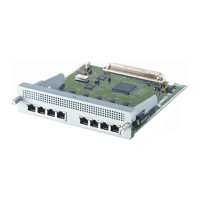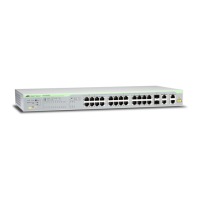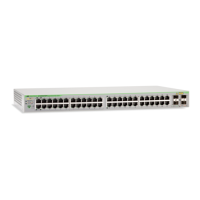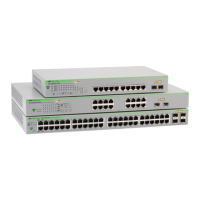EPSR Trace IGMP Counters
Software Reference for SwitchBlade x3100 Series Switches (Alarms and Troubleshooting)
8-30
DELETE TRACE EPSR
Syntax
DELETE TRACE EPSR [ ={ epsrdomain-list | ALL } ] [ MESSAGETYPE={
HEALTH | RINGUPFLUSH | RINGDOWNFLUSH | LINKDOWN | LINKFORWARD-
REQUEST | PERMISSIONLINKFORWARD | QUERYLINKSTATUS | ALL } ] [
INTERFACE={ type:id-range | id-range | ifname-list | ALL } ]
Description Delete the events which match the given filters. Not specifying MESSAGETYPE or
INTERFACE will treat that parameter as a wildcard.
Options The following table gives the range of values for each option that can be specified with
this command and a default value (if applicable).
Example DELETE TRACE EPSR ALLIED-2 MESSAGETYPE RINGUPFLUSH INTERFACE
ALL
Option Description Default Value
EPSR epsrdomain-list - list of domain(s)
ALL - all domains
MESSAGE-
TYPE
Specifies the exact EPSR protocol message type to
trace. Refer to Ethernet Protection Switched Ring
(EPSR) and SuperLoop Prevention for information on
these messagetypes.
HEALTH
RINGUPFLUSH
RINGDOWNFLUSH
LINKDOWN
LINKFORWARDREQUEST
PERMISSIONLINKFORWARD
QUERYLINKSTATUS
ALL - specifies to trace all messages
INTERFACE A logical representation of one or more physical ports;
type:id-range - the type of available ports, such as
ETH:7.0 or a range (ETH:8.0-8.9)
id-range - used with type (type:id) to query the physical
ports; the numerical identifier of the interface
ifname-list - list of interface names, if not numerical
ALL - all applicable interfaces
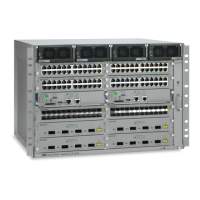
